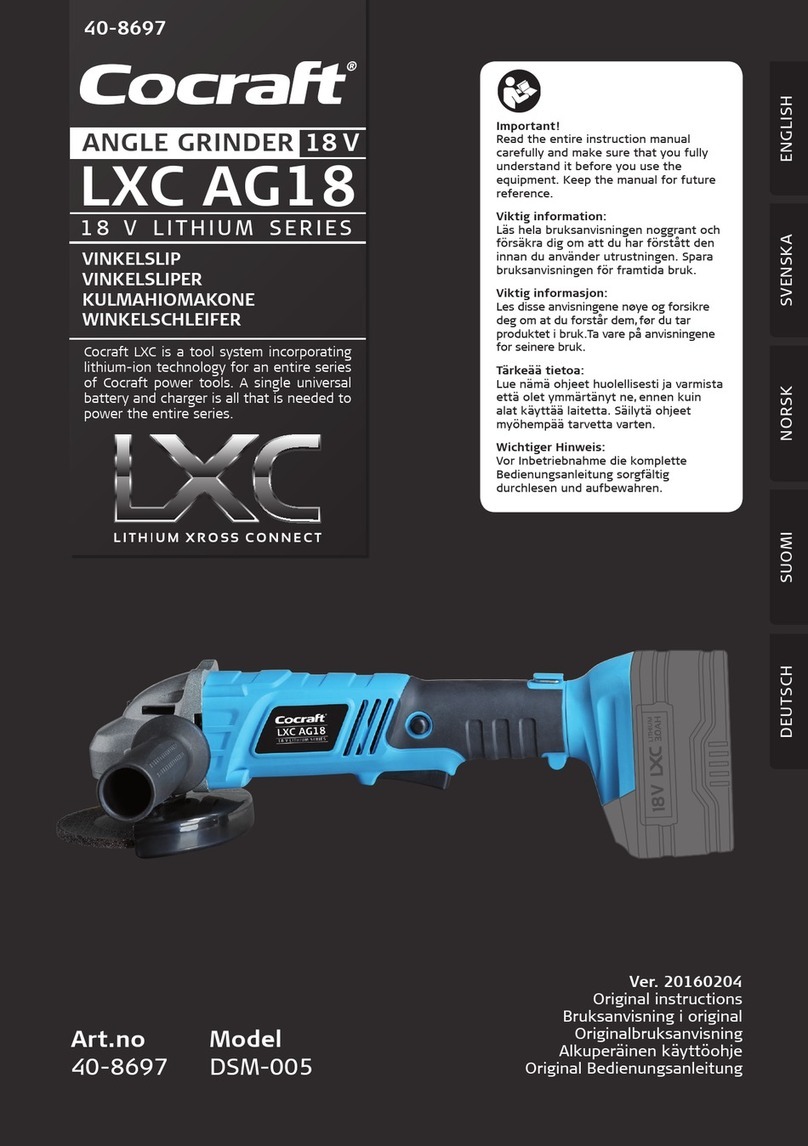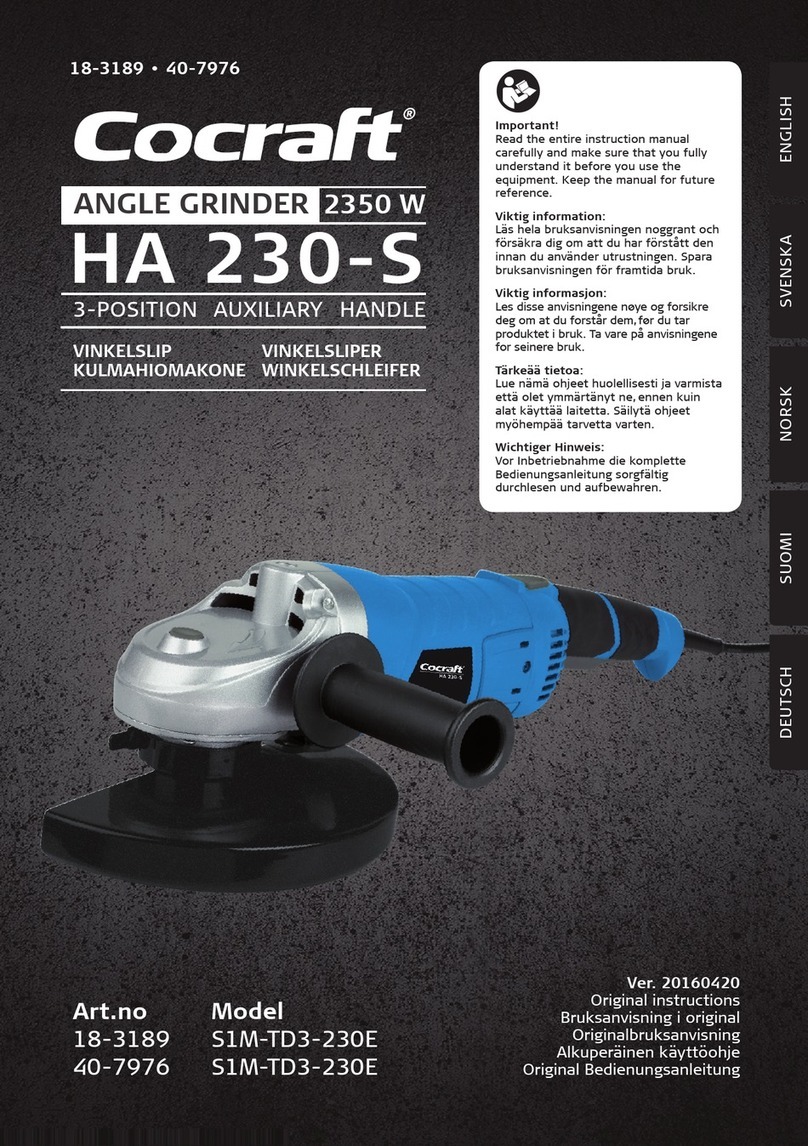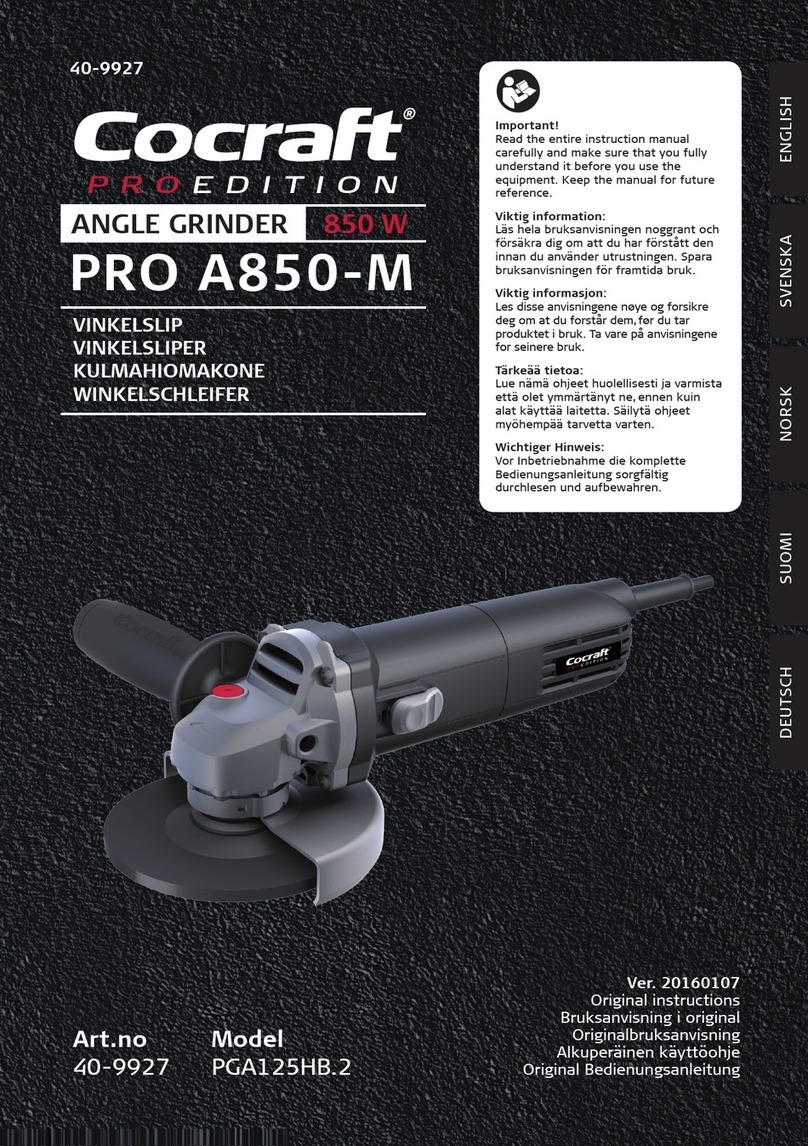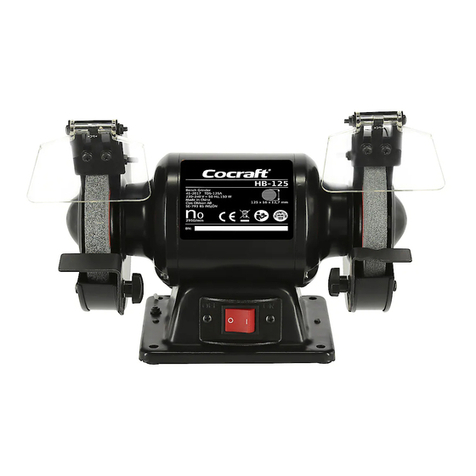
ENGLISH
5
f) Keep cutting tools sharp and clean. Properly maintained cutting tools with sharp
cutting edges are less likely to bind and are easier to control.
g) Use thepower tool, accessories and tool bits, etc. in accordance with these
instructions, taking into account theworking conditions and thework to be
performed. Use of thepower tool for operations different from those intended
could result in ahazardous situation.
5) Service
a) Repairs and service should only be performed by qualified tradesmen,
and only with original spare parts. This guarantees that thesafety of thepower
tool is maintained.
Special safety warnings applicable to grinding, dressing,
brushing, or cutting
• This power tool is intended for grinding, dressing, brushing and cutting. Read all
safety warnings, instructions, illustrations, and specifications that are included
with this tool. Neglecting to follow all of theinstructions listed below can result in
electric shock, fire and/or serious injury.
• Polishing is not recommended with this power tool. Theuse of this power tool
to perform tasks for which thetool was not intended, can lead to danger and
personal injury.
• Do not use accessories which are not intended to be used with this tool and which
are not recommended by themanufacturer. Even if theaccessory can be attached
to your power tool, there is no guarantee that it can be used safely.
• Theaccessory’s rated speed must at least correspond to thepower tool’s
maximum rated speed. Accessories which rotate faster than their rated speed can
break and shatter.
• Theaccessory’s outer diameter and size must fall within therated capacity of your
power tool. If anaccessory is thewrong size, it will not fit theguard and will not be
able to be controlled properly.
• Thespindle size of thewheels, flanges, and backing plates or other accessories
must fit thespindle on your power tool correctly. Ill-fitting/incorrectly sized accessories
will end up out of balance, vibrate violently, and may lead to loss of control.
• Do not use damaged accessories. Inspect theaccessory and make sure there are
no splits or cracks in thegrinding wheels; cracks or wear and tear on thebacking
plates, or loose or torn bristles on thesteel brush wheels. If you drop your power
tool or accessory, check for damage. If theaccessory is damaged, use anew/
undamaged accessory. After inspecting thetool and attaching anaccessory, keep
yourself and others outside of thepower tool’s danger zone and let it run at full
speed for one minute. Damaged accessories will normally break during this test
period.

































